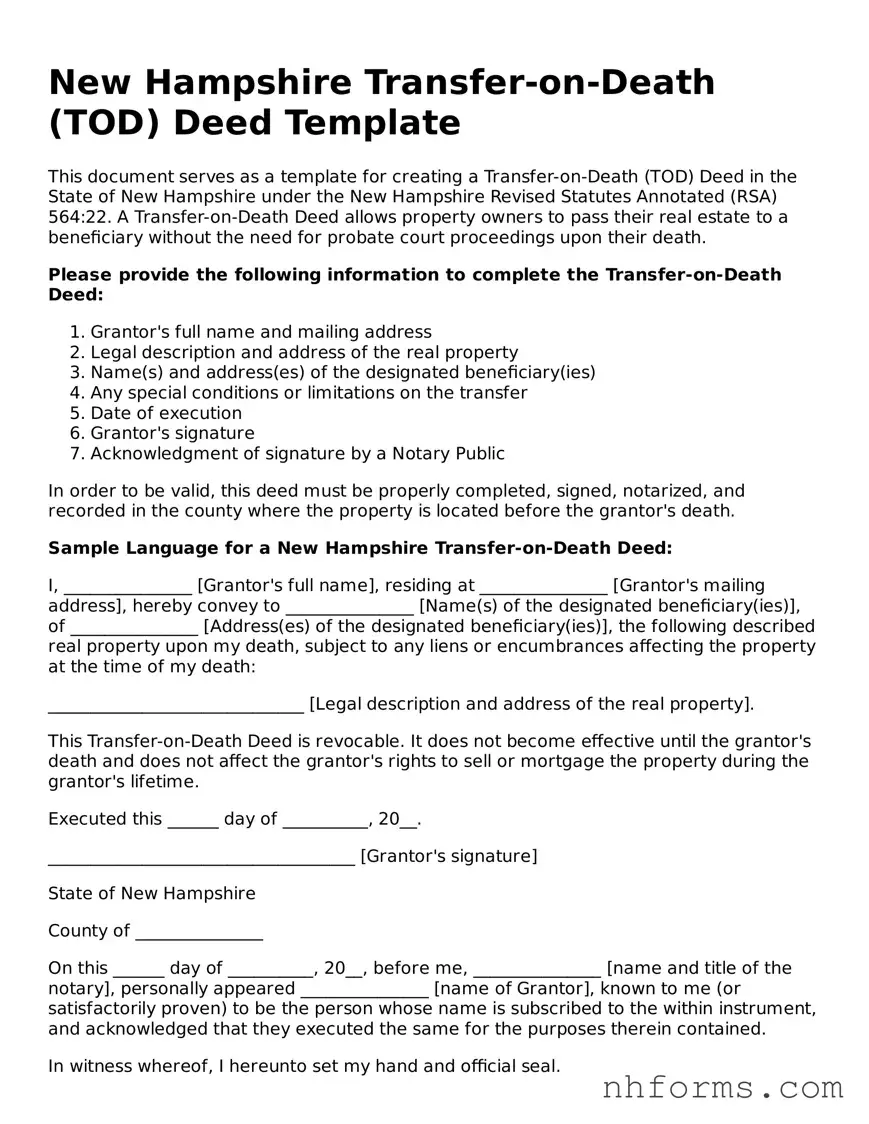New Hampshire Transfer-on-Death (TOD) Deed Template
This document serves as a template for creating a Transfer-on-Death (TOD) Deed in the State of New Hampshire under the New Hampshire Revised Statutes Annotated (RSA) 564:22. A Transfer-on-Death Deed allows property owners to pass their real estate to a beneficiary without the need for probate court proceedings upon their death.
Please provide the following information to complete the Transfer-on-Death Deed:
- Grantor's full name and mailing address
- Legal description and address of the real property
- Name(s) and address(es) of the designated beneficiary(ies)
- Any special conditions or limitations on the transfer
- Date of execution
- Grantor's signature
- Acknowledgment of signature by a Notary Public
In order to be valid, this deed must be properly completed, signed, notarized, and recorded in the county where the property is located before the grantor's death.
Sample Language for a New Hampshire Transfer-on-Death Deed:
I, _______________ [Grantor's full name], residing at _______________ [Grantor's mailing address], hereby convey to _______________ [Name(s) of the designated beneficiary(ies)], of _______________ [Address(es) of the designated beneficiary(ies)], the following described real property upon my death, subject to any liens or encumbrances affecting the property at the time of my death:
______________________________ [Legal description and address of the real property].
This Transfer-on-Death Deed is revocable. It does not become effective until the grantor's death and does not affect the grantor's rights to sell or mortgage the property during the grantor's lifetime.
Executed this ______ day of __________, 20__.
____________________________________ [Grantor's signature]
State of New Hampshire
County of _______________
On this ______ day of __________, 20__, before me, _______________ [name and title of the notary], personally appeared _______________ [name of Grantor], known to me (or satisfactorily proven) to be the person whose name is subscribed to the within instrument, and acknowledged that they executed the same for the purposes therein contained.
In witness whereof, I hereunto set my hand and official seal.
____________________________________ [Notary's signature]
Notary Public
My commission expires: ___________
Recording
The completed and notarized Transfer-on-Death Deed must be recorded with the Registry of Deeds in the New Hampshire county where the property is located. Recording fees apply, and the rates can vary by county. It is crucial to confirm current rates and document requirements with the local Registry of Deeds.
